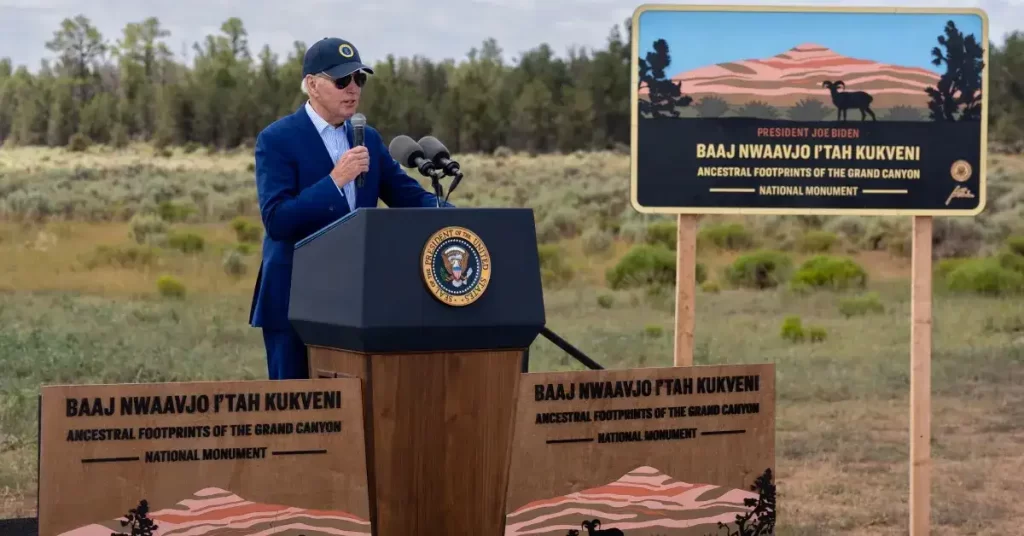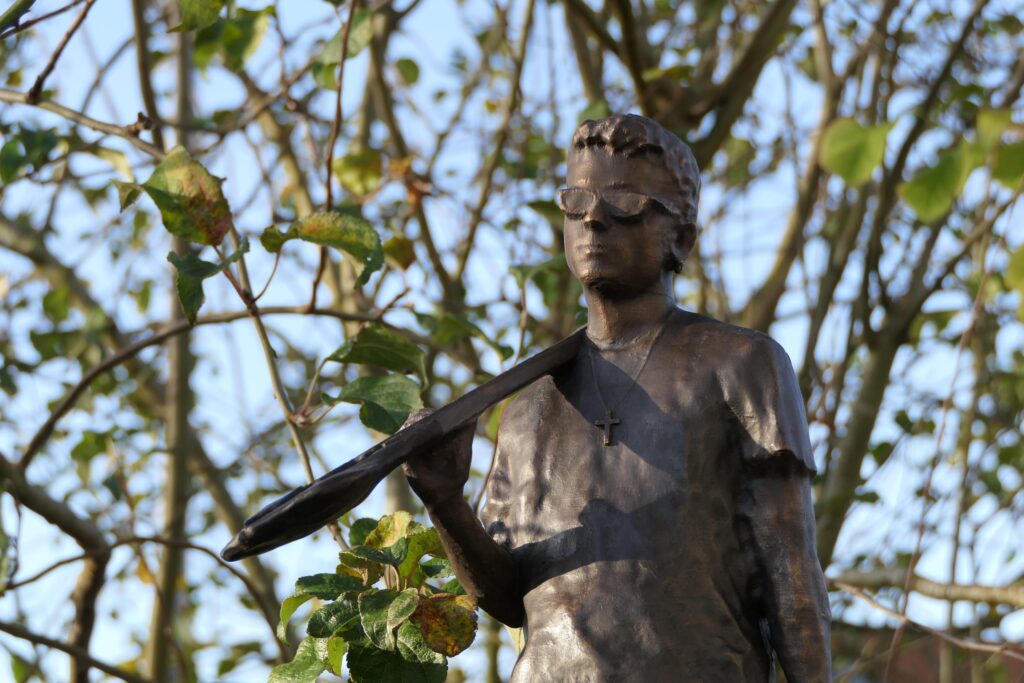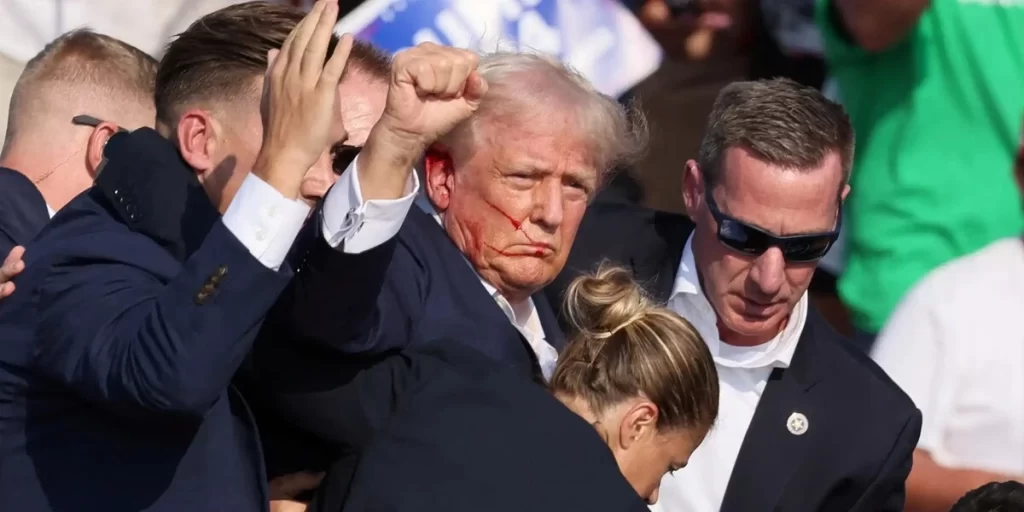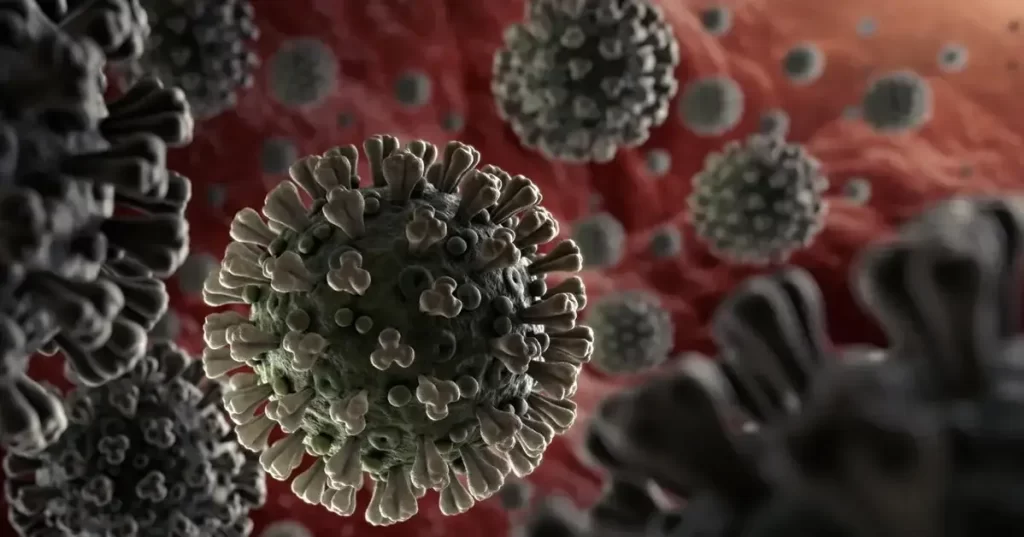Prez Joe Biden Unveils Monument to Safeguard Tribal Lands Near the Grand Canyon: A Triumph for Heritage and Preservation
In a resolute move to honor heritage and preserve sacred lands, Prez Joe Biden is poised to designate a new national monument neighboring the iconic Grand Canyon. This significant decision serves as a testament to the administration’s commitment to safeguarding Native American cultural sites and thwarting the possibility of uranium mining in the region. With a profound understanding of the intrinsic value of these lands, Biden’s announcement is set to solidify a legacy of conservation and cultural preservation.
This newly unveiled monument, known as the “Baaj Nwaavjo I’tah Kukveni-Ancestral Footprints of the Grand Canyon National Monument,” encapsulates the essence of Native American history and cultural significance. Encompassing a sprawling expanse of 917,618 acres, the monument transcends mere acreage; it is a living testament to the spiritual connection and historical importance that the Havasupai, Hopi, Hualapai, Paiute, Navajo, Yavapai-Apache, Zuni, and Colorado River Indian Tribes hold for these lands.
The very nomenclature of the monument is an ode to this profound connection. The name “Baaj Nwaavjo” translates to “where Indigenous peoples roam” in Havasupai, while “i’tah kukveny” signifies “our ancestral footprints” in Hopi. This linguistic bridge between the tribes symbolizes a united front in safeguarding their shared heritage and ancestral lands.
U.S. Interior Secretary Deb Haaland eloquently captures the essence of this historic designation: “Native American history is American history.” Haaland’s words carry the weight of generations, reminding us that this monument is not just about the protection of land but the acknowledgment of the voices and stories woven into the tapestry of this nation. As the first Native American cabinet member, Haaland stands as a living testament to the enduring spirit of Native stewardship.
Prez Joe Biden’s visit to Tusayan is a poignant reminder that the preservation of these lands is a matter close to his heart. Arriving in the embrace of representatives Raúl Grijalva and Ruben Gallego, both Democrats from Arizona, Biden’s commitment to this cause is unmistakable. On Tuesday, his announcement will reverberate through the canyons, unveiling a monument poised to be managed through a co-stewardship system with tribes intrinsically linked to the land’s legacy.
As the curtain is drawn on this monumental decision, the landscape of preservation and protection takes form. The designated area includes the ethereal Marble Canyon in the northeast, the encompassing Kaibab National Forest lands to the south, and the serene expanses around the Kanab Creek drainage on the Kaibab Plateau’s western front. While slightly smaller than the initially proposed dimensions, this monument’s true grandeur lies not merely in its acreage but in the potential it holds to shape the future.
The significance of this designation extends beyond the surface, echoing through the corridors of policy and preservation. The resolute stance to permanently halt new uranium claims across a substantial portion of the area is a stark reminder of the pivotal role this region plays in the intricate balance of our environment. A decree to protect existing activities like livestock grazing leases, hunting, fishing, and recreational access reaffirms the commitment to sustainability.
Yet, as with any landmark decision, the road to preservation is not devoid of challenges. Energy Fuels, Inc., the company behind the uranium mine named the Pinyon Plain Mine, has raised concerns about the potential ramifications for the nuclear energy industry’s transition to carbon-free sources. The debate surrounding uranium mining’s impact on water sources and local ecology is a poignant reminder that every step toward preservation requires a delicate balance between progress and protection.
The beacon of hope, however, shines from the voices of those most directly connected to the land. The Havasupai people, whose reservation nestles within the canyon and is adorned with aquamarine springs flowing to the Colorado River, have long feared the encroaching threat of uranium mining. Their pleas to safeguard their water and sacred spaces resonate deeply with the monument’s intent.
Dianna Sue White Dove Uqualla, a Havasupai Tribal Councilwoman, eloquently encapsulates the monument’s essence as a testament to the wisdom of both Native and non-Native ancestors. “It’s really something that has to be now,” she states with conviction, underlining the collective responsibility to protect not just land but the stories and legacies etched into its fabric.
The Grand Canyon, an emblematic symbol of unity between tribes and a sanctuary for practicing cultures, takes on renewed significance in the face of this designation. It has long been a sacred space where communities converged to celebrate their heritage and partake in the spiritual offerings of its waters. Uqualla’s sentiment that the monument will “help us all come together” underscores the potential of this designation to bridge divides and unite diverse communities under the banner of shared heritage.
Havasupai officials extended an invitation to Interior Secretary Deb Haaland, which she described as one of the most meaningful journeys of her life. Her visit to Supai Village painted a vivid picture of the land’s intrinsic significance. “I witnessed the deep connection that the Havasupai people have with the land and the waters that have sustained them since time immemorial,” Haaland recounted, underscoring the personal and profound impact of the monument.
This unveiling is not only a celebration of heritage but a reflection of a broader historical context. Previous presidents have wielded their powers to create monuments of cultural and scientific import, shaping the narrative of preservation. President Biden’s move echoes similar decisions by former Presidents Clinton and Obama, illustrating a continuum of commitment to protect areas of profound significance.
The resonance of this designation reverberates further as it finds itself embraced by Arizona senators, tribes, and conservation advocates alike. Rep. Raúl Grijalva’s advocacy for a Grand Canyon-area monument since the Obama era underscores the collaborative effort to ensure the protection of this iconic region. The support from these quarters embodies the spirit of unity, transcending political and ideological divides to champion a cause that unites us all.
As the curtain rises on President Biden’s proclamation, it’s a poignant reminder that this is not merely a political decision; it’s a pledge to honor history, safeguard heritage, and stand as stewards for future generations. The monument, nestled near the Grand Canyon, is a testament to the enduring resilience of tribes, the wisdom of ancestors, and the commitment to a shared future where land, culture, and unity intersect.



